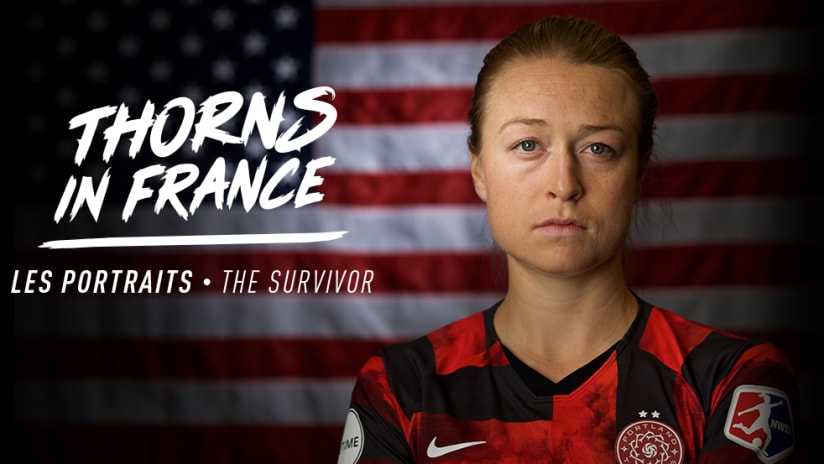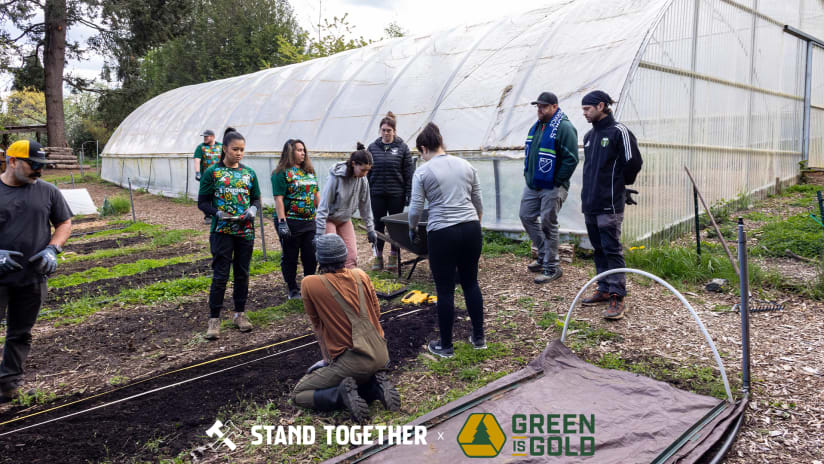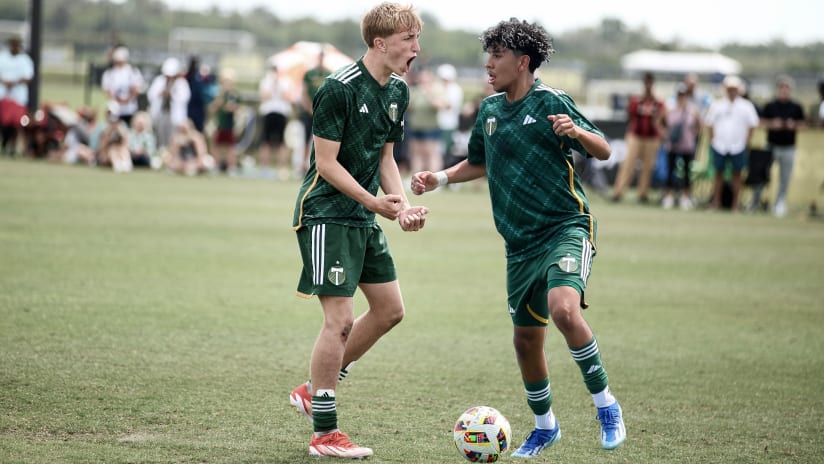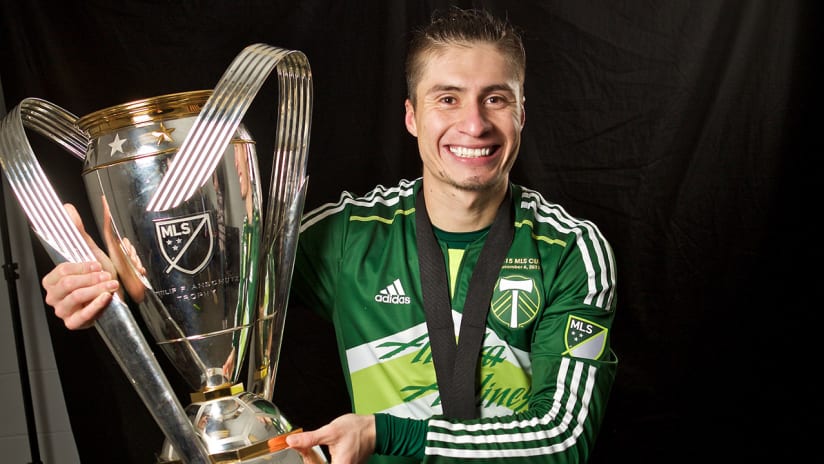PORTLAND, Ore. – There’s a caution in Emily Sonnett’s voice, one that surfaces anytime she reflects on her soccer. Given how her career has unfolded over the last four years, it’s a caution that’s understandable.
Over the course of three seasons as a professional, the Portland Thorns FC defender has gone from her league’s first-overall draft pick and a fast-track to being a United States international to somebody who had to fight for her national team relevance. She may be on her way to France, now – set to participate, next month, in her first FIFA World Cup – but at 25 years old, she’s still not in a place where she can speak with assurance before correcting her course.
“In terms of my development, I think I'm in a great place,” the University of Virginia product concedes in the days before the 2019 National Women’s Soccer League season. “I think I've found myself, as a happy accident, in a very good spot.”
A happy accident. If anybody else described the rise to 2016’s top pick, the need to regroup in the years that followed, and the rebound that’s righted her course as a happy accident, Sonnett might raise an eyebrow. We all should. But Sonnett is allowed to see herself from a different perspective, one that may fit a psychological end more than a historical one.
She knows exactly what she has and hasn’t done to get to this point. If her place in the World Cup is an accident, she would know.
It’s a description that’s hard to fathom, though. The United States’ national team, supported by a population base and a college system that produces female soccer players in unrivaled quantity is widely seen as having the deepest pool of talent in the women’s soccer world. To rise above those masses and become one of 23 selected to represent her country is more than happenstance. No player goes to the World Cup in the red, white and blue as a fluke.
For Sonnett, though, “accident” is a euphemism. Even then, it undersells what she’s been though. Just over a year after being on the outside of a World Cup spot, the Georgian has redefined her international career, eschewing a path defined by potential for one underpinned by adaptation, and perseverance. Gone are the days when a defensive prospect with elite physical tools had to be spoken of in the future tense. Surviving the gauntlet of her career’s first challenges, Sonnett’s future has become her present.

Image: ISI Photo
“’Whoa! That’s so cool!’”
She’s speaking for her 12-year-old self. It’s two months before she’ll be selected for France, at a time when every piece of reflection has to be qualified. “If I’m lucky enough to go …” “If I have a chance …” Players like Sonnett can’t speak about the World Cup with certainty until they know they’re going. Through a maze of media inquiries hoping to find out how a World Cup player-to-be feels, she has to stay cautious.
The new question, though, allows her to change gear, finding some pride though the eyes of her former self. “Think back to the 10, 12-year-old you. What would that version of Emily say about Emily, now?”
“Sick,” she says. It’s one of her favorite words. When coach says a session went well? “Cool, sick,” she’ll say. It means she’s happy about it. The idea of playing at the new Providence Park, when it comes up during the interview? “I think that's going to be so sick.” And if somebody with a phone captures the perfect timing of one of her jokes. “Sick” The word seems invented for those moments.
Perhaps Sonnett was using the word as a 10- or 12-year-old. It seems unlikely, though. Not that it stops her from putting the word in former Emily’s mouth.
“She'd be like, ‘Whoa! You play soccer? That's sick,’” she bursts. “That's exactly what [the 10- or 12-year-old Sonnett] would say.”
This is the Emily Sonnett the public has seen, one whose day-to-day personality isn’t much different than the person fans see on social media. Her best moments make it there, with no content idea every going to waste, but her moment-to-moment whimsy isn’t much different. Like all soccer players, her time on the field – be it in games, or in practice – becomes a time of focus, as is the development she does outside the lines. But in the personal moments in between, the reprieves from training’s intensity, Sonnett is something else.
She is as funny as she wants to be – a high bar, considering how highly she prioritizes humor – but she is also thoughtful, her pensiveness leaving her in a parallel, open world. She doesn’t avoid dishonesty as much as it’s not a thought. Why contrive something when you can just be what you are? Sometimes that leaves questions without answers, having spent time thinking about what a coach, teammate or staffer is asking, but most of the time it leads to a connection. Nobody ever walks away from Emily Sonnett uncertain about how she feels.
That’s not to say Sonnett is always certain. Far from it. Implied in her openness is a realization: that she doesn’t have all the answers, be it for herself or others. It’s a modesty, of sorts, one that comes from priorities and acceptance. She knows what she is right now, yet she always seems curious as to why she got here, or where she could be in the future. She can be confident about what she knows and curious about what she doesn’t.
She knows the life she has, and she can be proud of it. Her younger self would see the dream come true. But within the context of her professional career, one slated to have an international impact this summer and beyond, there’s more nuance than a dream come true.
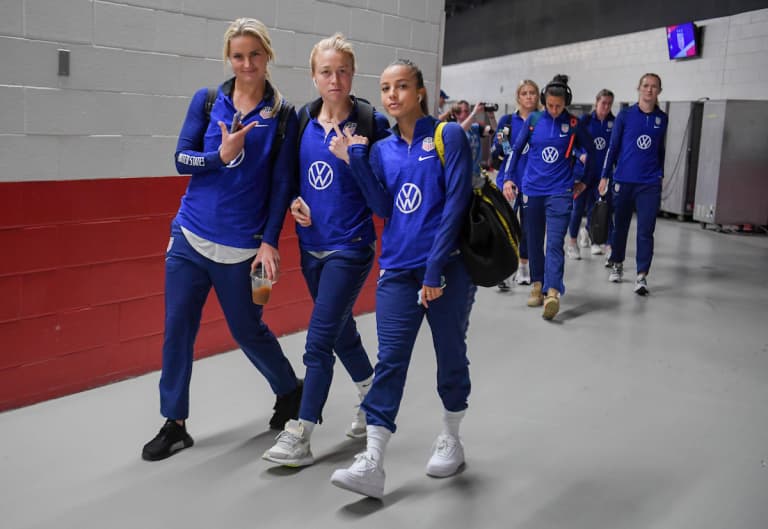
Image: ISI Photo
That’s where “happy accident” comes from. Having seen her national-team dream sidetracked two years ago, Sonnett can’t take her place for granted. The World Cup is where she was projected to be when she became the collegiate game’s top draft prospect in 2015, and it’s where the national team program saw her going when they selected her as an Olympic alternate in the summer of 2016. Come 2017, though, Sonnett was no longer being selected, putting her in a place where an NWSL offseason in Australia, in early 2018, became a tool to reestablish her international course.
“I wasn't called in. I wasn’t …” she says, reinforcing the reality of what, in 2017, felt like a new world. “It was a long five or six months that I don't think got a cap in my, I think it would have been 2017-year cycle. That’s difficult.”
It’s a difficulty that forced Sonnett to reassess, with the mental side of the game becoming a priority. Throughout her development, Sonnett had always been among her level’s best athletes, something that continues to be the case in the NWSL and internationally. But as the gap in athleticism shrunk, other aspects of her game became more important. And in those aspects, she had to improve.
“I'm more purposeful,” she admits, speaking about her current self. “I relied a lot on my athleticism coming to the league out of college, and I think (it helps) being able to play with some of the best in the world and taking their little tricks, or their little whatever. It's like, it does matter if you're using your left foot (as opposed) to (your) right foot to have a one second advantage, to get a ball to a player so they have more time and space.”
These aren’t the things she thought about in Charlottesville, Virginia, or before, in her hometown of Marietta, Georgia. Back then, she didn’t have an identity as Emily Sonnett, U.S. international-caliber player. She saw that in other people, but inherently modest, she never put herself in that group.
“I played with Morgan Brian,” at UVA, she explains, “and she had gone No. 1 (in the NWSL College Draft) the year before. And not that I was in her shadow – we played different positions – but I always thought, ‘Wow. That's really cool. She's No. 1, first pick’ …
“It didn't really hit me towards the end,” of her college career, she says, “because I was just being a defender, positionally, and also it depends on what teams want, that being that No. 1 draft pick was going to happen. And I had another girl on my team, Makenzy Doniak. She had scored so many goals. So, I was like, for sure she's going No. 1.”
When Sonnett found out the Thorns were taking her first overall, she was in camp with the U.S. National Team, a place that was quickly becoming part of her soccer reality. From not thinking about your post-college potential to being a No. 1 pick and an international, Sonnett’s playing profile changed within months – before she had time to adjust. Then, a year later, when she had gotten used to her new profile, she was back out of the national team picture.
“It does affect players, if that is somewhat of your identity and you're not getting called in ...” Sonnett can admit, now. She’s had a year to reflect on what it means to be back in the picture. “You think you're doing really well with your professional team and then you're not getting rewarded, it does down you a little bit. And, am I not doing the right things at club to then get pushed forward?”
The U.S. Women’s National Team’s record books are littered with players who, unable to navigate their first international obstacle, fall out of the picture. Of the 236 players who were capped at the senior level before 2019, over half (125) failed to reach a 10th international appearance. More than one-in-three (89) never make it to appearance number five. According to history, when you face the obstacles put in front of Sonnett, you usually don’t respond. The race for spots is so fierce, one stumble leaves you lapped by the field.
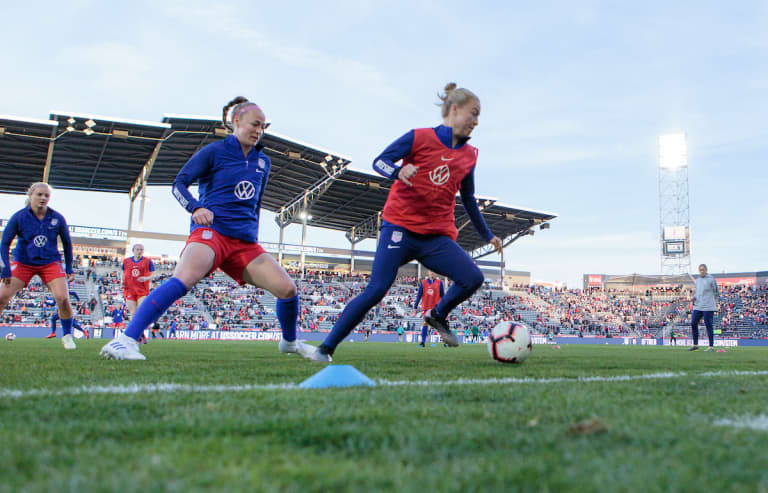
Image: ISI Photo
“I would say that's when the shift happened,” Sonnett remembers, thinking back to her 2017 trials. As the World Cup approaches, she can speak of the shift in a different way. It’s about vulnerability, as well as identity. It’s about when, after being with the national team, you can start to be yourself.
“Maybe back then, when you're first on the team, you kind of are in this survival mode,” she says, thinking back to her first camps, “and you're like, ‘How can I just survive here?’ And then where can you take it to. Like, ‘No, I belong here. How can I now do what the coaches are asking, but also implement my special skill or how can I be special within the team structures?’”
Sonnett used to think of her special skill in terms of what makes her stand out. Now, she sees it as how she can fit. A center back for much of her career, the Thorns defender is being used by the U.S. more at right back than in the middle. It’s about fit. Instead of relying on her athleticism to elevate her game, she now leverages softer skills, explaining, “I can over communicate” with teammates, so all know everyone plays a part in finding her best level.
“I just think being my regular Sonnett soccer self is huge for me, because I think that's really the passion that I bring,” she says. “I think it’s really big part of my grit or my game.”
“I have the capability to be here,” she admits, now, “but how can I now be who I am instead of being in the survival mode and being a contributor to the team.”
That’s the key to defining a survivor: adaptation. Every person has skills that leave them adept in the right conditions, but make someone uncomfortable, where they have to develop new skills, and how do they survive? Over half of the players who’ve been good enough to feature for the United States never made that adjustment. Sonnett has already moved past cap 32.
“I have now been more purposeful on where I am on the field,” she says, “recognizing it has to be quicker, the touches have to be faster, I have to be playing one touch here. How can I set my teammates up for success? I always joke that I'm feeding the machines …”
Again, it’s a modest approach, recognizing she doesn’t have to provide all the answers. They’re machines. She’s not. She gives them inputs. She only has to have answers for herself.
“It’s not going to look all pretty, but it's how efficient can I get the ball to the machines so they can play-make. And not that we can’t be play-makers, but that's their expertise, and that's my job: to basically break lines and get it further up the field as quickly as possible.”
It also narrows her view. In college, she didn’t think about herself on the level of Brian and Doniak, but she did think of others that way. She thought of them as number one picks. She thought of herself as something else.
Now, she thinks of herself as a communicator, a line-breaker and a machine-feeder. She sees herself in terms of the process – not only where she fits into it but how she’s developed.
“It's basically just being part of the present,” she says, aware that, for the first part of her professional career, the discussion always centered on her future. “I’m not going to, say, enjoy the process; the process is going to suck. But you need to be in the process, and you need to be very cognizant of the process and do the things that are going to make you better. And whether you have a support group where you have your friends that you can talk through, and whatever. But I think the big one is just the process in general.”
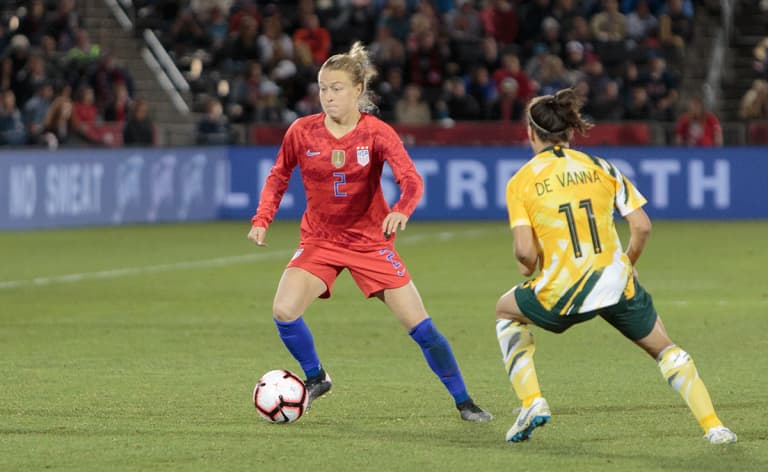
Image: ISI Photo
That, alone, is a survival skill. It’s how Sonnett has adapted. Beyond the younger player who could rely on athleticism, and beyond the prospect that was fast-tracked to international relevance, Sonnett has become a player that can rely on more than one asset. She’s no longer a set of physical traits for others to assess, select and develop. After three years as a professional, playing for clubs on two continents, Sonnett is now a player that can define herself. That she survived to claim a spot in France gives her the right to do so.
“I'm happy with the development over the past year, year-and-a-half, and being able to get back with the national team …,” she says, “but I want to be way more consistent. I feel I have that capability to keep working and do that.
“People keep saying I'm young. I mean I'm 25, but I think I have a lot of time to fix those things, which is encouraging … It's encouraging that there is time to perfect the craft longer.”
About that, Sonnett can speak with new confidence. After all, she survived. Then, in reclaiming her U.S. place, she thrived. Her spot in France is more than a “happy accident.” It’s about what she’s become.

